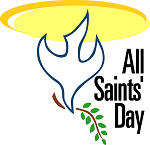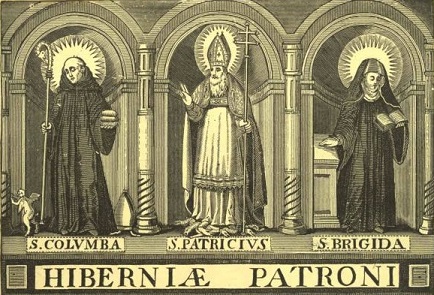“All Saints’ Day is a solemn holy day of the Catholic Church celebrated annually on November 1. The day is dedicated to the saints of the Church, that is, all those who have attained heaven. It should not be confused with All Souls’ Day, which is observed on November 2, and is dedicated to those who have died and not yet reached heaven.”(Catholic Online)
“Generally, All Saints’ Day is a Catholic Holy Day of Obligation, meaning all Catholics are required to attend Mass on that day, unless they have an excellent excuse, such as serious illness.”(Catholic Online)
As we prepare to celebrate Halloween this weekend into next week, let me remind you a little bit of just how this holiday started, it’s origin in Ireland and it’s relationship to all Saints day. However, “it is important to remember these basic facts: Halloween is a secular holiday that comes the night before All Saints’ Day. All Saints’ Day is on November 1, and it is a Holy Day of Obligation. All Souls’ Day in on November 2, and it is NOT a Holy Day of Obligation.”(Catholic Online)
In what has become a holiday in which more adults celebrate than St. Patrick’s Day, $6.9 Billion versus $4.7 Billion in merchandise, costumes, and food (according to 2015 National Retail Foundation statistics) many do not know that many origins cite it as a Celtic holiday tradition.
We first see a reference to Halloween in the Celtic Calendar with the Autumn Festival of Samhain, which was held the first day of November. The pagans celebrated four festivals and the Samhain Festival is widely accepted as the traditional end of the Celtic year. The festival meaning is rooted in its word etymology with Sam meaning summer. According to the Online Etymology Dictionary, its origin is “from Irish samhain (Gaelic samhuinn), from Old Irish samain, literally “summer’s end,” from Old Irish sam “summer” (see summer (n.1)) + fuin “end.” Nov. 1, the Celtic festival of the start of winter and of the new year.” Rather than being about rituals or worshipping the dead, the Celts marked it as the end of a season and the beginning of the Irish Winter.
In an effort to move Christians away from pagan gods and culture in the early 7th Century, Pope Boniface IV established All Saints Day around 609 or 610 AD. This day is also known as All Hallows Day and thus All Hallows Eve being October 31st or Halloween. Even though the Celts celebrated this festival in a spiritual sense, a lot of confusion ensued in the transition years and the holiday took on a darker meaning. Being known for a transition from one year to the next, the Samhain Festival devolved into a transition between worlds as evidenced tales of the puca or Irish evil fairies spitting on any unharvested apples to make them inedible as the Samhain marked the end of the final harvest of the summer, and all apples had to have been picked by the time the day’s feasting began.
In a world and time where banshees and fairies also existed, Samhain offered a time where they could freely move about and the ancient Celts often lit bonfires and wore ugly masks to both ward off evil spirits and to stop the dead from identifying those people they disliked during their lives.
Another reference to modern day Halloween and passing out candy can also be traced back to Samhain and the early Celts. While the outspoken lit fires and raised hell (so to speak), the timid, however, would leave out food in their homes, or at the nearest hawthorn or whitethorn bush (where fairies were known to live), hoping that their generosity would appease the spirits. Revelers also bobbed for apples in buckets of water and quenched their thirst with mugs of spiced cider. Also, the dish Colcannon, an Irish potato pie made with Kale that comes into season in winter in Ireland is often viewed as a traditional Halloween meal that pays homage to our ancestors.
As you enjoy your Magners Irish Cider and bob for apples all while wearing your ugly Hillary or Trump mask, know full well your ancient Irish history is completely represented in the celebration of the 2016 Halloween Season.
Yours in Friendship, Unity, and Christian Charity,
Liam
William Lehn
Ohio Catholic Action Chairman

